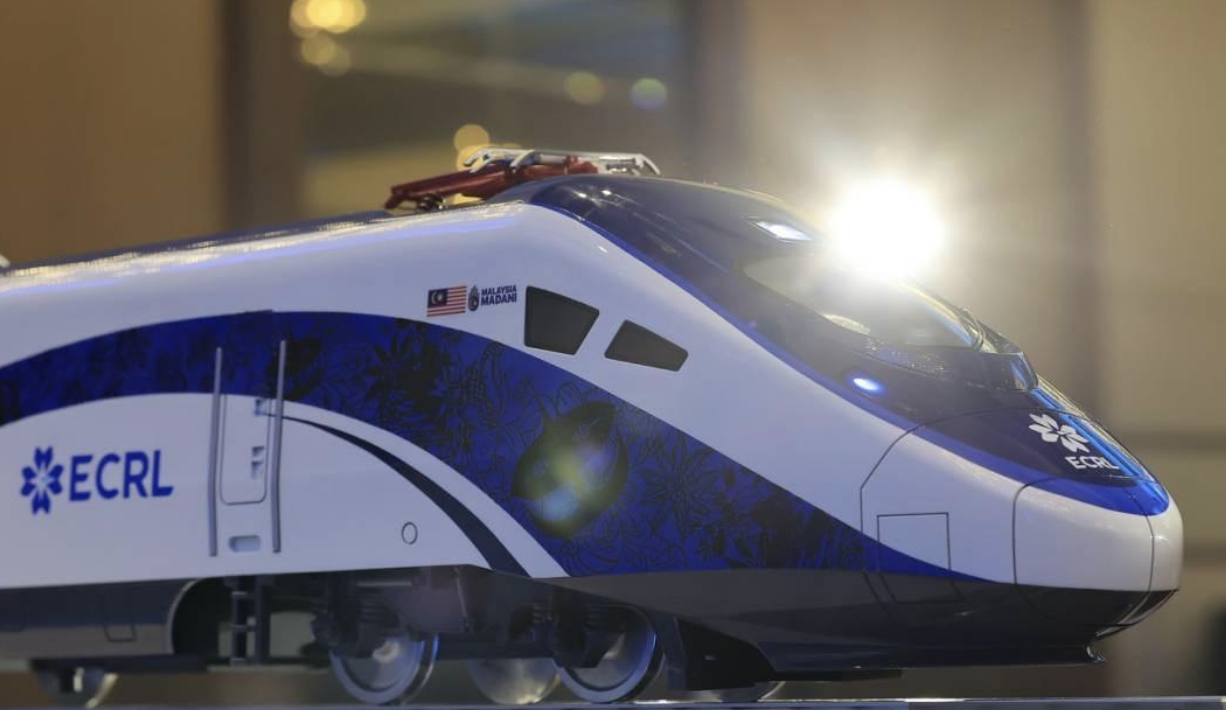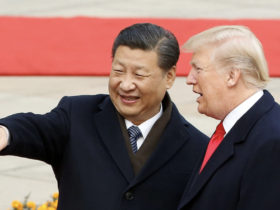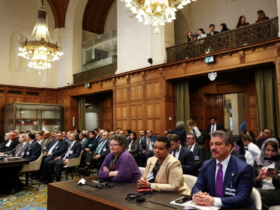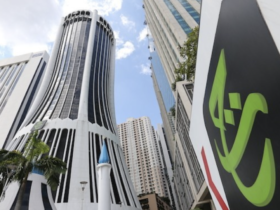KUALA LUMPUR, Oct 24 — Malaysia’s strategic position as the only unavoidable land bridge between Thailand and Singapore makes it a pivotal player in the development of the long-envisioned Singapore-Kunming Rail Link (SKRL), which aims to link China with Southeast Asia through an integrated rail corridor.
Transport expert Dr Rosli Azad Khan said Malaysia’s central role in the SKRL’s “central corridor” by 2030 is crucial, particularly as the country strengthens its domestic network through the East Coast Rail Link (ECRL) and the Electrified Double-Tracking Project (EDTP) between Gemas and Johor Bahru.
“Malaysia’s leverage is highest at Johor due to its integration with Singapore and at the Klang Valley and ECRL interfaces,” he told Bernama.
However, Rosli noted that bottlenecks remain on Malaysia’s side, such as the last-mile cross-border capacity and Customs, Immigration and Quarantine throughput in Johor Bahru; the readiness of the electrified double-tracking project of the Gemas to Johor Bahru line; and gauge/interface planning between the metre-gauge network of Keretapi Tanah Melayu Bhd (KTMB) and the standard-gauge systems like the ECRL.
“For the SKRL, dual systems are still viable if transfer nodes are well-planned, such as at Port Klang for the ECRL interface, Johor Bahru for cross-border connectivity, and Padang Besar for the Thailand link,” he said.
Rosli added that the EDTP should be recognised as a key part of Malaysia’s SKRL readiness.
“Electrification of the Gemas–Johor Bahru line will enable Electric Train Service (ETS) trains to run directly to Johor and, eventually, into Singapore.
“To make it meaningful, the ETS–Singapore service should be treated as an international link rather than terminating at Johor Bahru. While the SKRL vision is ambitious, 2030 may remain aspirational without Thailand accelerating its double-track and high-speed rail upgrades, which are massive and costly,” he said.
ECRL reinforces Malaysia’s role in rail connectivity
Malaysia’s wider rail ambitions are reflected in the ongoing ECRL project, connecting Kelantan, Terengganu and Pahang to Selangor, and are designed to integrate with logistics hubs on the west coast of Peninsular Malaysia.
Transport Minister Anthony Loke Siew Fook said discussions are ongoing for a northern extension from Kota Bharu to the Thai border and a southern spur from Port Klang to Seremban and Melaka to further strengthen domestic and regional trade linkages.
He said the government remains committed to completing the existing 665-kilometre (km) line between Kota Bharu and Port Klang by December 2027.
Loke said that extension proposals are being studied for technical and economic feasibility to align Malaysia’s network with ASEAN’s broader connectivity goals.
“The ECRL is not only an infrastructure project but also a national connector that will integrate east and west logistics corridors and complement cross-border trade initiatives such as the SKRL,” the minister said.
ASEAN’s progress towards seamless rail connectivity
Under the ASEAN-Mekong Basin Development Cooperation (AMBDC), the SKRL will span about 7,000 km and link seven ASEAN countries, namely Cambodia, Laos, Malaysia, Myanmar, Singapore, Thailand and Vietnam, with Kunming, the capital of China’s Yunnan Province.
The project, valued at about US$15 billion (US$1 = RM4.22), falls under China’s Belt and Road Initiative (BRI) and aims to enhance passenger and cargo transport as well as tourism among participating countries.
The SKRL features three primary routes from Kunming — eastern, central and western — all converging in Bangkok before continuing south through Thailand and Malaysia to Singapore.
The Kunming–Vientiane segment has been operational since December 2021, while Thailand’s double-track upgrade and Bangkok–Nong Khai high-speed line are targeted for completion by 2030.
Between Malaysia and Thailand, existing tracks already connect Padang Besar to Kuala Lumpur, and a new direct cargo service between Kuala Lumpur and Bangkok, approved in 2025, will enhance cross-border trade flows.
Meanwhile, the Johor Bahru–Singapore RTS Link is under construction and slated for operation by late 2026, while discussions to revive the Kuala Lumpur–Singapore High-Speed Rail (HSR) continue.
Malaysia’s infrastructure readiness
Through KTMB, Malaysia plays a pivotal role in the Pan-Asia Railway Network, supporting cross-border connectivity, freight facilitation and integration with new projects such as the ECRL.
KTMB is on track to complete the EDTP from Gemas to Johor Bahru by the end of 2025, connecting with the Padang Besar–Gemas line to create a continuous electric rail spine along the peninsula.
Additionally, KTMB is upgrading its tracks from a 16-tonne axle load (TAL) to 20 TAL to support higher freight volumes.
KTMB said that these developments position it to operate the ETS from the northern to southern tip of Malaysia — a critical step toward eventual SKRL integration.
Economic impact for ASEAN
Transportation analyst Abi Sofian Abdul Hamid said the SKRL could generate immense economic opportunities for ASEAN by cutting logistics costs and expanding access to regional and global markets.
“With improved infrastructure and procedures across the countries where the rail runs through, the movement of goods will be faster and cheaper.
“The other opportunity is when this rail can support significant growth along the corridor, it will open investment into logistics projects such as inland ports and even special economic corridors,” he said.
He added that the project would support Malaysia’s environmental, social and governance (ESG) objectives by shifting more cargo from road to rail, reducing congestion and carbon emissions.
“It will reduce the number of lorries on the roads and help achieve Malaysia’s zero-carbon target,” he said.
Shared progress remains key
Meanwhile, Rosli noted that the success of the SKRL will ultimately depend on coordinated progress across the region.
“Malaysia can steer the southern implementation, especially in setting standards at border and intermodal nodes, so the network serves ASEAN trade patterns — not just northbound flows,” he said.
He acknowledged that Malaysia’s ports could face some cargo diversion to rail in the long term but described it as “a blessing in disguise”, citing the environmental benefits of rail-based freight.
Additionally, KTMB said that it aims to enhance both passenger and cargo train operations by 2030, with the completion of the full track and infrastructure expected to strengthen regional integration.


-加码-scaled.jpg)

-加码-scaled.jpg)
















Leave a Reply